quinta-feira, 13 de outubro de 2011
A Cabala Viva
More Info:
http://www.amazon.fr/Kabbale-vivante-Daniel-Beresniak/dp/2858295255
On The Cover:
http://en.wikipedia.org/wiki/Giordano_Bruno
http://en.wikipedia.org/wiki/Franz_Kafka
http://en.wikipedia.org/wiki/Albert_Einstein
segunda-feira, 10 de outubro de 2011
O Zohar (O Livro do Esplendor)
Extract Info On The Book (from Wikipedia):
The Zohar (Hebrew: זֹהַר, lit Splendor or Radiance) is the foundational work in the literature of Jewish mystical thought known as Kabbalah.[1] It is a group of books including commentary on the mystical aspects of the Torah (the five books of Moses) and scriptural interpretations as well as material on Mysticism, mythical cosmogony, and mystical psychology. The Zohar contains a discussion of the nature of God, the origin and structure of the universe, the nature of souls, redemption, the relationship of Ego to Darkness and "true self" to "The Light of God," and the relationship between the "universal energy" and man. Its scriptural exegesis can be considered an esoteric form of the Rabbinic literature known as Midrash, which elaborates on the Torah.
The Zohar is mostly written in what has been described as an exalted, eccentric style of Aramaic, which was the day-to-day language of Israel in the Second Temple period (539 BC – 70 AD), was the original language of large sections of the biblical books of Daniel and Ezra, and is the main language of the Talmud.[2]
The Zohar first appeared in Spain in the 13th century, and was published by a Jewish writer named Moses de Leon. De Leon ascribed the work to Shimon bar Yochai, a rabbi of the 2nd century during the Roman persecution[3] who, according to Jewish legend,[4][5] hid in a cave for thirteen years studying the Torah and was inspired by the Prophet Elijah to write the Zohar. This accords with the traditional claim by adherents that Kabbalah is the concealed part of the Oral Torah.
While the traditional majority view in religious Judaism has been that the teachings of Kabbalah were revealed by God to Biblical figures such as Abraham and Moses and were then transmitted orally from the Biblical era until its redaction by Shimon ben Yochai, modern academic analysis of the Zohar, such as that by the 20th century religious historian Gershom Scholem, has theorized that De Leon was the actual author. The view of non-Orthodox Jewish denominations generally conforms to this latter view, and as such, most non-Orthodox Jews have long viewed the Zohar as pseudepigraphy and apocrypha while sometimes accepting that its contents may have meaning for modern Judaism. Jewish prayerbooks edited by non-Orthodox Jews may therefore contain excerpts from the Zohar and other kabbalistic works,[6] even if the editors do not literally believe that they are oral traditions from the time of Moses.
The modern evolutionary view according to the authentic (from the sages) wisdom of Kabbalah, interprets the Zohar as a technology for people who are seeking meaningful and practical answers about the meaning of their lives, the purpose of creation and existence and their relationships with the laws of nature. [7][8]
Contents
The Book of Zohar includes parts and chapters in conformance with the weekly chapters of the Torah:[15]
The Book of Beresheet (Genesis): Beresheet, Noach, Lech Lecha, Vayera, Chaiey Sarah, Toldot, Vayetze, Vayishlach, Vayeshev, Miketz, Vayigash, Vayichi.
The Book of Shemot (Exodus): Shemot, Vayera, Bo, Bashalach, Yitro, Mishpatim, Terumah (Safra de Tzniuta), Tetzaveh, Ki Tissa, Veyikahel, Pekudey.
The Book of Vayikra (Leviticus): Vayikra, Tzav, Shmini, Tazria, Metzura, Acharey, Kedushim, Emor, Ba Har, Bechukotay.
The Book of Bamidbar (Numbers): Bamidbar, Naso (Idra Raba), Baalotcha, Shlach Lecha, Korach, Chukat, Balak, Pinchas, Matot.
The Book of Devarim (Deuteronomy): Devarim, Ve Etchanen, Ekev, Reah, Shoftim, Ki Titze, Ki Tavo, Nitzavim, Vayelech, Ha’azinu (Idra Zuta), V'Zos HaBercha.
( http://en.wikipedia.org/wiki/Zohar )
Marcadores:
books,
cabala,
editorial estampa,
esoterism,
jewish esotericism,
jewish mysticism,
kabbalah,
kabbalah texts,
mysticism
Os Provérbios de Salomão
About The Author:
Solomon (Hebrew: שְׁלֹמֹה, Modern Shlomoh Tiberian Šəlōmōh ISO 259-3 Šlomo; Arabic: سليمان Sulaymān; Greek: Σολομών Solomōn), commonly known as the Great One or Solomon the Great was, according to the Book of Kings and the Book of Chronicles,[1] a King of Israel and according to the Talmud one of the 48 prophets,[2] is identified as the son of David,[3] also called Jedidiah (Hebrew יְדִידְיָהּ) in 2 Samuel 12:25, and is described as the third king of the United Monarchy, and the final king before the northern Kingdom of Israel and the southern Kingdom of Judah split; following the split his patrilineal descendants ruled over Judah alone.
The Hebrew Bible credits Solomon as the builder of the First Temple in Jerusalem,[3] and portrays him as great in wisdom, wealth, and power, but ultimately as a king whose sin, including idolatry and turning away from Yahweh, leads to the kingdom being torn in two during the reign of his son Rehoboam.[4] Solomon is the subject of many other later references and legends.
In the Qur'an, he is a Prophet, known as Sulaiman.
Extract Text From: http://en.wikipedia.org/wiki/Solomon
More Info (on the subject of the book): http://www.abetterhope.com/hope/sayings.html & http://www.fellowshippbc.org/media/Essays/Appendix%20A%20-%20The%20Sayings%20of%20Solomon.pdf
terça-feira, 4 de outubro de 2011
The Digital Dead Sea Scrolls
The Dead Sea Scrolls are a collection of 972 texts from the Hebrew Bible and extra-biblical documents found between 1947 and 1956 on the northwest shore of the Dead Sea, from which they derive their name. They were specifically located at Khirbet Qumran in the British Mandate for Palestine, in what is now named the West Bank.
The texts are of great religious and historical significance, as they include the oldest known surviving copies of Biblical and extra-biblical documents and preserve evidence of great diversity in late Second Temple Judaism. They are written in Hebrew, Aramaic and Greek, mostly on parchment, but with some written on papyrus.[1] These manuscripts generally date between 150 BCE and 70 CE.[2] The scrolls are traditionally identified with the ancient Jewish sect called the Essenes, though some recent interpretations have challenged this association and argue that the scrolls were penned by priests in Jerusalem, Zadokites, or other unknown Jewish groups.[3][4]
The Dead Sea Scrolls are traditionally divided into three groups: "Biblical" manuscripts (copies of texts from the Hebrew Bible), which comprise roughly 40% of the identified scrolls; "Apocryphal" or "Pseudepigraphical" manuscripts (known documents from the Second Temple Period like Enoch, Jubilees, Tobit, Sirach, non-canonical psalms, etc., that were not ultimately canonized in the Hebrew Bible), which comprise roughly 30% of the identified scrolls; and "Sectarian" manuscripts (previously unknown documents that speak to the rules and beliefs of a particular group or groups within greater Judaism) like the Community Rule, War Scroll, Pesher on Habakkuk (Hebrew: פשר pesher = "Commentary"), and the Rule of the Blessing, which comprise roughly 30% of the identified scrolls.[5]
Digital copies
High-resolution images of all the Dead Sea scrolls are now available online here. They can also be purchased in inexpensive multi-volumes - on disc media or in book form - or viewed in certain college and university libraries.
According to Computer Weekly (16 November 2007), a team from King's College London is to advise the Israel Antiquities Authority, who are planning to digitize the scrolls. On 27 August 2008 the Israeli Internet news agency YNET announced that the project is under way.[53] The scrolls are planned to be made available to the public via Internet. The project is to include infrared scanning of the scrolls which is said to expose additional details not revealed under visible light.
The text of nearly all of the non-biblical scrolls has been recorded and tagged for morphology by Dr. Martin Abegg, Jr., the Ben Zion Wacholder Professor of Dead Sea Scroll Studies at Trinity Western University in Langley, BC, Canada. It is available on handheld devices through Olive Tree Bible Software - BibleReader, on Macs through Accordance, and on Windows through Logos Bible Software and BibleWorks.
On 19 October 2010, it was announced[54] that IAA would scan the documents using multi-spectral imaging technology developed by NASA to produce high-resolution images of the texts, and then, through a partnership with Google, make them available online free of charge, on a searchable database and complemented by translation and other scholarly tools. The first images, which according to the announcement could reveal new letters and words,[54] are expected to be posted online in the few months following the announcement, and the project is scheduled for completion within five years. According to IAA director Pnina Shor, "from the minute all of this will go online there will be no need to expose the scrolls anymore",[54] referring to the dark, climate-controlled storeroom where the manuscripts are kept when not on display.[54]
On September 25, 2011, the Digital Dead Sea Scrolls site went online. Google and the Israel Museum teamed up on this project,[55] allowing users to examine and explore these most ancient manuscripts from Second Temple times at a level of detail never before possible. Developed in partnership with Google, the new website gives users access to searchable, fast-loading, high-resolution images of the scrolls, as well as short explanatory videos and background information on the texts and their history. The Dead Sea Scrolls, which include the oldest known biblical manuscripts in existence, offer critical insight into Jewish society in the Land of Israel during the Second Temple Period, the time of the birth of Christianity and Rabbinic Judaism. Five complete scrolls from the Israel Museum have been digitized for the project at this stage and are now accessible online.
"We are privileged to house in the Israel Museum's Shrine of the Book the best preserved and most complete Dead Sea Scrolls ever discovered," said James S. Snyder, Anne and Jerome Fisher Director of the Israel Museum. "They are of paramount importance among the touchstones of monotheistic world heritage, and they represent unique highlights of our Museum's encyclopedic holdings. Now, through our partnership with Google, we are able to bring these treasures to the broadest possible public."
The five Dead Sea Scrolls that have been digitized thus far include the Great Isaiah Scroll, the Community Rule Scroll, the Commentary on Habakkuk Scroll, the Temple Scroll, and the War Scroll, with search queries on Google.com sending users directly to the online scrolls. All five scrolls can be magnified so that users may examine texts in exacting detail. Details invisible to the naked eye are made visible through ultra-high resolution digital photography by photographer Ardon Bar-Hama– at 1,200 mega pixels each, these images are almost two hundred times higher in resolution than those produced by a standard camera. Each picture utilized UV-protected flash tubes with an exposure of 1/4000th of a second to minimize damage to the fragile manuscripts. In addition, the Great Isaiah Scroll may be searched by column, chapter, and verse, and is accompanied by an English translation tool and by an option for users to submit translations of verses in their own languages.,[55]
"The Dead Sea Scrolls Project with the Israel Museum enriches and preserves an important part of world heritage by making it accessible to all on the internet," said Professor Yossi Matias, Managing Director of Google’s R&D Center in Israel. "Having been involved in similar projects in the past, including the Google Art Project, Yad Vashem Holocaust Collection, and the Prado Museum in Madrid, we have seen how people around the world can enhance their knowledge and understanding of key historical events by accessing documents and collections online. We hope one day to make all existing knowledge in historical archives and collections available to all, including putting additional Dead Sea Scroll documents online."
The Dead Sea Scrolls Digital Project is funded by George Blumenthal and the Center for Online Judaic Studies, which first envisioned the project in order to make these manuscripts widely accessible and to create an innovative resource for scholars and the public alike. Dr. Adolfo D. Roitman, Lizbeth and George Krupp Curator of the Dead Sea Scrolls and Head of the Shrine of the Book, and Dr. Susan Hazan, Curator of New Media and Head of the Museum's Internet Office, directed the project for the Israel Museum, working in collaboration with Eyal Fink, Technical Lead, and Eyal Miller, New Business Development Manager, at Google's R&D Center in Israel.
ExtractNetSource (and below images): http://en.wikipedia.org/wiki/Dead_Sea_Scrolls
sábado, 1 de outubro de 2011
A Corte de Lucifer
About the Author:
Otto Wilhelm Rahn (February 18, 1904—March 13, 1939) was a German medievalist and a Obersturmführer (First Lieutenant) of the SS, born in Michelstadt, Germany.
Speculation still swirls around Otto Rahn and his research. From an early age, he became interested in the legends of Parsifal, Holy Grail, Lohengrin, and the Nibelungenlied. While attending the University of Giessen he was inspired by his professor, the Baron von Gall, to study the Albigensian (Catharism) movement, and the massacre that occurred at Montségur. Rahn is quoted as saying that "It was a subject that completely captivated me''".
Work
In 1931 he traveled to the Pyrenees region of southern France where he conducted most of his research. Aided by the French mystic and historian Antonin Gadal, Rahn argued that there was a direct link between Wolfram Von Eschenbach's Parzival and the Cathar Grail mystery. He believed that the Cathars held the answer to this sacred mystery and that the keys to their secrets lay somewhere beneath the mountain pog where the fortress of Montségur remains, the last Cathar fortress to fall during the Albigensian Crusade.
Rahn believed it was possible to trace the Cathars, who guarded the Holy Grail in their castle at Montsegur, back to Druids who converted to Gnostic Manichaeism. The Druids in Britain were forerunners of the Celtic Christian Church. He saw that the culture of the medieval Cathar stronghold of Languedoc bore strong a resemblance to the ancient Druids. Their priests were akin to the Cathar Parfaits. The Cathar secret wisdom being preserved by the later Troubadours, the travelling poets and singers of the medieval courts of France-M. Sabeheddin, [Countermedia][1].
Rahn's SS service and death
Rahn wrote two books linking Montségur and Cathars with the Holy Grail: Kreuzzug gegen den Gral (Crusade Against the Grail) in 1933 and Luzifers Hofgesind (Lucifer's Court) in 1937. After the publication of his first book, Rahn's work came to the attention of Heinrich Himmler, the head of the SS, who was fascinated by the occult and had already initiated research in the south of France.
Rahn joined his staff as a junior non-commissioned officer and became a full member of the SS in 1936. Journeys for his second book led Rahn to places in Germany, France, Italy, and Iceland.
Openly homosexual, he was assigned guard duty at the Dachau concentration camp in 1937 as punishment for a drunken homosexual scrape. He resigned from the SS in 1939.
On March 13[verification needed], 1939 nearly on the anniversary of the fall of Montségur, Rahn was found frozen to death on a mountainside near Söll (Kufstein, Tyrol) in Austria. His death was officially ruled a suicide.
Rahn in popular culture
Rahn has been described as the inspiration behind the Indiana Jones movie Raiders of the Lost Ark,[2] although neither George Lucas nor Steven Spielberg has ever mentioned anything about his having inspired the film.
Rahn has been the object of many rumours and strange stories, including that his death had been faked, although all such speculation has failed to be substantiated.[3] He features as a character in the 2008 novel The Judas Apocalypse by Dan McNeil. In the novel, Rahn helps a fellow German archaeologist search for the lost treasure of the Cathars. He also figures in the "Berlin Noir" novel The Pale Criminal by Philip Kerr and Blood Lance by Craig Smith. In the Italian comic book Martin Mystère, Rahn fakes his death and joins the US secret service "Elsewhere".[4]
Richard Stanley, cult director of such films as Hardware and Dust Devil, also made a documentary about Rahn and his fixation on the Holy Grail called The Secret Glory in 2001.
Quotation
"My ancient forbears were heathens, and my ancestors were heretics. For their exoneration I collect the pieces that Rome left over." (Luzifers Hofgesind, i.e. Lucifer's Court)
Source: http://en.wikipedia.org/wiki/Otto_Rahn
More Info: http://shadowtheatre13.com/ottorahnbio.html & http://www.telegraph.co.uk/culture/film/starsandstories/3673575/The-original-Indiana-Jones-Otto-Rahn-and-the-temple-of-doom.html
Marcadores:
books,
catharism,
esoteric pilgrimages,
grail mysteries,
hugin editores,
luciferianism,
mysticism,
Otto Rahn
Raízes Ocultistas do Nazismo (cultos secretos arianos e sua influência na ideologia nazi)
Info About the Author & Book:
Nicholas Goodrick-Clarke B.A. (Bristol), D.Phil. (Oxon) is a professor of Western Esotericism at University of Exeter and author of several books on esoteric traditions.
He is the author of several books on modern occultism and esotericism, and the history of its intersection with Nazi politics. His book, The Occult Roots of Nazism, has remained in print since its publication in 1985 and has been translated into eight languages. He has also written on the occultist aspects of neo-Nazism in Black Sun: Aryan Cults, Esoteric Nazism and the Politics of Identity.
He is Professor of Western Esotericism and Director of the Centre for the Study of Esotericism (EXESESO) within the School of Humanities and Social Sciences at the University of Exeter in the United Kingdom. He was a founding members of the European Society for the Study of Western Esotericism. He lives in Southern England.
Source: http://en.wikipedia.org/wiki/Nicholas_Goodrick-Clarke
The Occult Roots of Nazism: Secret Aryan Cults and Their Influence on Nazi Ideology: The Ariosophists of Austria and Germany, 1890-1935 is a book by Nicholas Goodrick-Clarke. It is the "seminal work"[1] on Nazi occultism and Ariosophy. The book also includes some information on Esotericism in Germany and Austria between 1880 and 1945. The book is based on Goodrick-Clarke's 1982 Ph.D. thesis The ariosophists of Austria and Germany 1890-1935: Reactionary political fantasy in relation to social anxiety[2].
Rohan Butler, who had written The Roots of National Socialism in the 1930s, wrote the foreword.
First published in 1985, it was republished as a paperback by New York University Press in 1992 (ISBN 0-8147-3060-4), and more recently republished by I.B. Tauris & Co Ltd (ISBN 1-86064-973-4).
The book has been translated into French, Polish, Italian, Russian, Czech, German and Greek.[3]
The German edition features a preface and an additional essay Nationalsozialismus und Okkultismus (National Socialism and Occultism) (15 pages) by H.T. Hakl.
Publication history
The exact title of the book changed in the 1992 edition. Foreign language editions are also (partly) listed:
Nicholas Goodrick-Clarke 1985: The Occult Roots of Nazism: The Ariosophists of Austria and Germany, 1890-1935, Wellingborough, England: The Aquarian Press. ISBN 0-85030-402-4.
1992: The Occult Roots of Nazism: Secret Aryan Cults and Their Influence on Nazi Ideology, New York: New York University Press ISBN 978-0814730607
2004: The Occult Roots of Nazism: Secret Aryan Cults and Their Influence on Nazi Ideology, (Expanded with a new Preface) I.B. Tauris & Co. ISBN 1-86064-973-4.
French edition 1989: Les racines occultistes du nazisme: Les Aryosophistes en Autriche et en Allemagne 1890-1935 ISBN 2867140692.
Russian edition 1993: Оккультные корни нацизма
German edition 1997: Die okkulten Wurzeln des Nationalsozialismus. Graz, Austria: Stocker ISBN 3-7020-0795-4.
2. German edition 2000: Graz: Stocker ISBN 3-7020-0795-4.
3. German edition 2004: Wiesbaden: Marix-Verlag ISBN 3937715487.
Greek edition 2006: ΟΙ ΑΠΟΚΡΥΦΙΣΤΙΚΕΣ ΡΙΖΕΣ ΤΟΥ ΝΑΖΙΣΜΟΥ ISBN 960-8345-85-5
Czech edition 1998: Okultní kořeny nacismu: Rakouští a němečtí ariosofisté 1890-1935: Tajné árijské kulty a jejich vliv na nacistickou ideologii. Prague: Votobia ISBN 978-80-7220-023-8
2. Czech edition 2005: Okultní kořeny nacismu: Tajné árijské kulty a jejich vliv na nacistickou ideologii. Prague: Eminent ISBN 80-7281-278-5
Source: http://en.wikipedia.org/wiki/The_Occult_Roots_of_Nazism
More Info: http://en.wikipedia.org/wiki/Ariosophy & http://en.wikipedia.org/wiki/Pan-Germanism
Hitler e as Religiões da Suástica (Hitler et la Tradition Cathare)
About the Author(s):
Michel Bertrand (né en 1944) est un écrivain et journaliste français connu aussi sous le pseudonyme de Michel Angebert.
Officier-marinier de réserve, directeur de collection à Ouest-France et aux Éditions maritimes et d'outre-mer (en 1985), il est spécialiste de la guerre navale 1939-1945[1]. Il a également utilisé le pseudonyme collectif de Jean-Michel Angebert avec Jean-Victor Angelini (qui a lui-même utilisé le pseudonyme de Jean Angebert). Ses principales publications portent sur l'ésotérisme, le saint Graal et la tradition primordiale. Il a dirigé la revue Connaissance des religions (1987-1991, puis 1993-2000)
Publications
Michel Angebert
- Le Graal dans la tradition primordiale, conférence du 29 janvier 1973, Paris, Institut d'herméneutique, 1973.
- Contribution à Julius Evola, le visionnaire foudroyé, avec Robert de Herte, Vintila Horia, Pierre Pascal, et al., Paris, Éditions Copernic, 1977.
- avec Gautier Darcy, Histoire secrète de la Bourgogne, Paris, Albin Michel, « Histoire secrète des provinces françaises », 1978.
- Hitler et la tradition cathare, Paris, Robert Laffont, « Les énigmes de l'univers », 1971.
- Les Mystiques du soleil, Paris, Robert Laffont, « Les énigmes de l'univers », 1971.
- Le Livre de la tradition, Paris, Robert Laffont, « Les énigmes de l'univers », 1972.
- Histoire secrète de la Provence, Paris, Albin Michel, « Histoire secrète des provinces françaises » 1978.
- Les Forces navales françaises libres, Paris, Argout, 1980.
- La Marine française au combat (1939-1945), Paris ; Limoges, Charles-Lavauzelle, 1982.
- Le Soleil des Cathares. Montségur citadelle du Graal, Paris, Atlas, 1982.
- Histoire secrète de Strasbourg, Paris, Albin Michel, « Histoire secrète des provinces françaises » 1984.
- Suffren (1729-1788). De Saint-Tropez aux Indes, Paris, Perrin, 1991.
Source: Wikipedia (France)
Marcadores:
aryan mythology,
bertrand,
catharism,
esoterism,
Jean-Michel Angebert,
nazi occultism,
occultism,
theosophy,
xerox books
As Ciências Secretas de Hitler (Edição Círculo de Leitores)
About Nigel Pennick:
Nigel Campbell Pennick, born 1946 in Guildford, Surrey, England in the United Kingdom, an author publishing on occultism, magic, natural magic, divination, subterranea, rural folk customs, traditional performance and celtic art as well as runosophy.
He is a writer on marine species as well as an occultist and geomant, artist and illustrator, stained-glass designer and maker, musician and mummer. He also writes on European arts and crafts, buildings, landscape, customs, games and spiritual traditions. He has written several booklets on the history of urban transport in Cambridge and London . He is best known for his research on geomancy, labyrinths, sacred geometry, the spiritual arts and crafts, esoteric alphabets and Germanic runic studies.
He has written many books in German and has over fifty published books and hundreds of published papers on a wide range of subjects.
Biography
He lived most of his childhood in post-war London. He has travelled extensively in Europe and North America, researching, lecturing and conducting 'workshops', creating shrines and labyrinths.
His Celtic artwork appeared in the book New Visions in Celtic Art. In 2002 his Celtic artwork was on show in Birmingham in the Celtic Art and Design exhibition at the Central Library and, in 2009 in the exhibit Celtic Spirit Worldwide at the Walkers' Gallery in San Marcos, Texas.
He founded the Institute of Geomantic Research and later The Library of the European Tradition, which published new research on geomancy and folklore as well as rare archival material from the 19th and early 20th century. In the late 1970s and early 1980s he organized six geomantic conferences in Cambridge and Royston.
Scientific career
Trained in biology, for 15 years he was a researcher in algal taxonomy for a government institute in Cambridge. During this time, he published 29 scientific research papers on ultrastructure and taxonomy of marine microorganisms including descriptions of 8 new species of marine algae and protozoa previously unknown to science before moving on to become a writer and illustrator.
Source: http://en.wikipedia.org/wiki/Nigel_Pennick
More Info:
http://en.wikipedia.org/wiki/Religious_aspects_of_Nazism & http://en.wikipedia.org/wiki/Nazism_and_occultism
Marcadores:
books,
círculo de leitores,
nazi occultism,
Nigel Pennick,
occult,
occult sciences
Subscrever:
Mensagens (Atom)































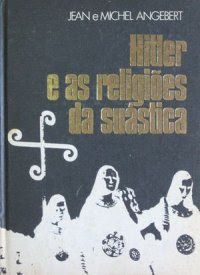



.jpg)
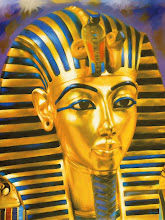.jpg)

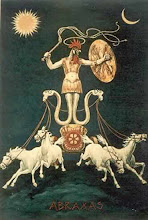

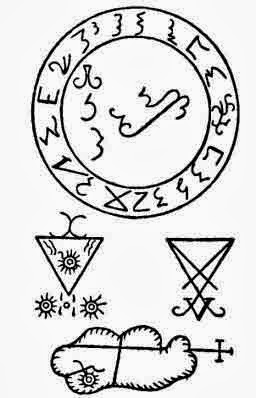



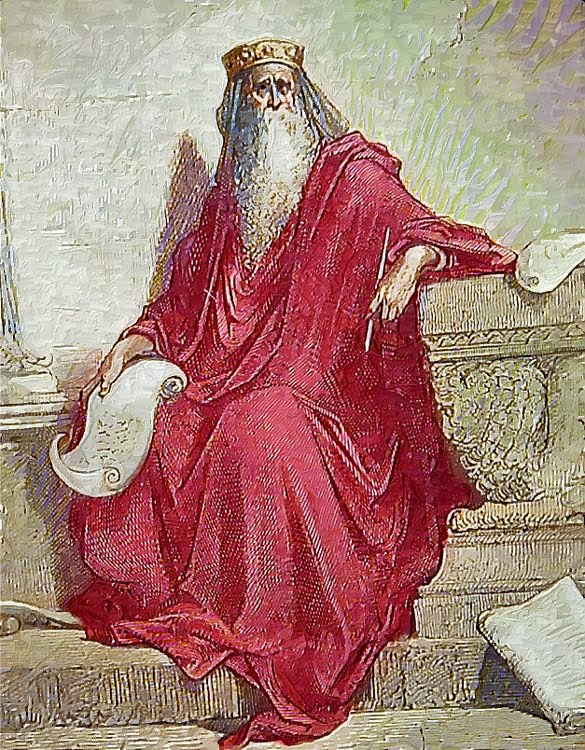
+001.jpg)





+001.jpg)
+001.jpg)
+001.jpg)




+001.jpg)
+001.jpg)








+001.jpg)
+001.jpg)
+001.jpg)
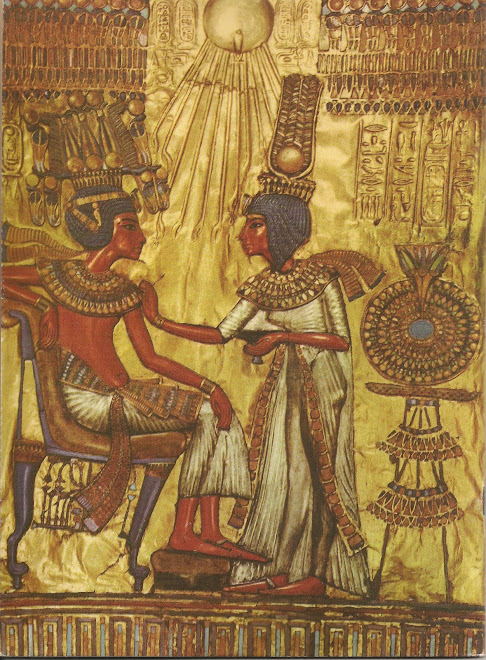.jpg)


